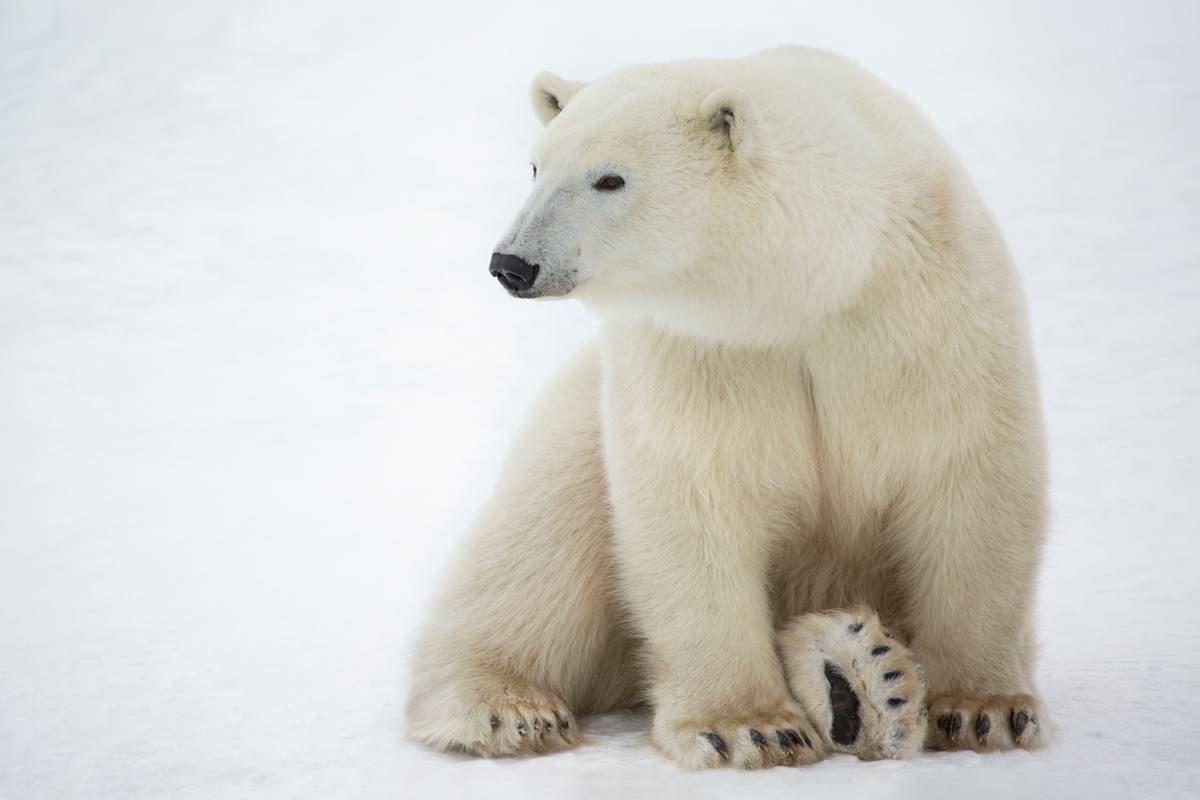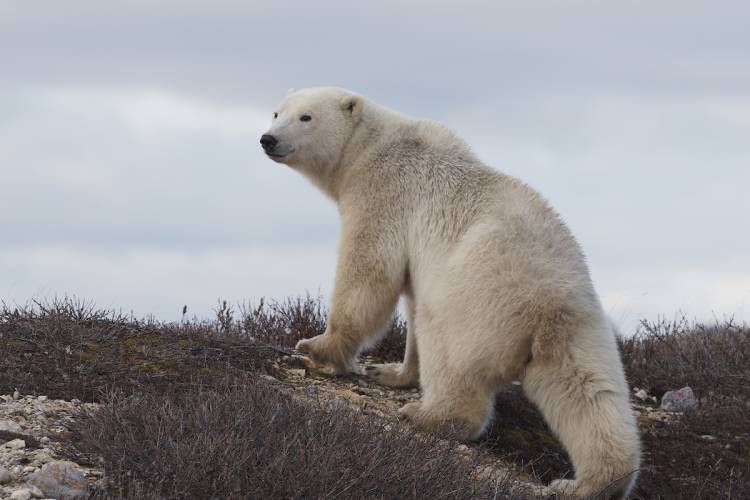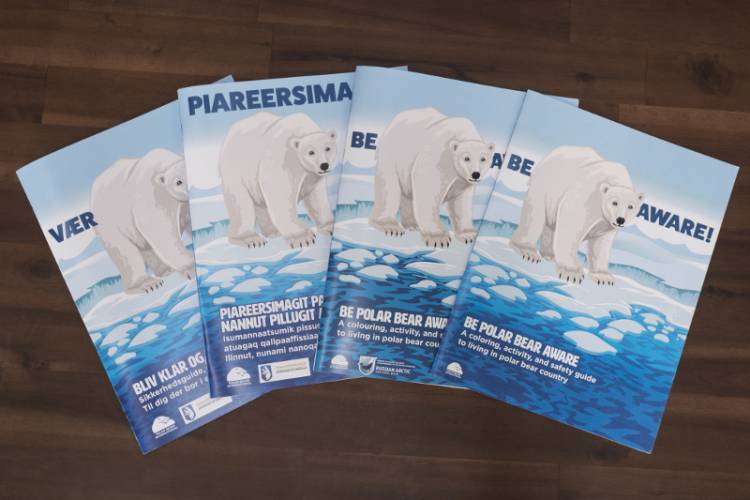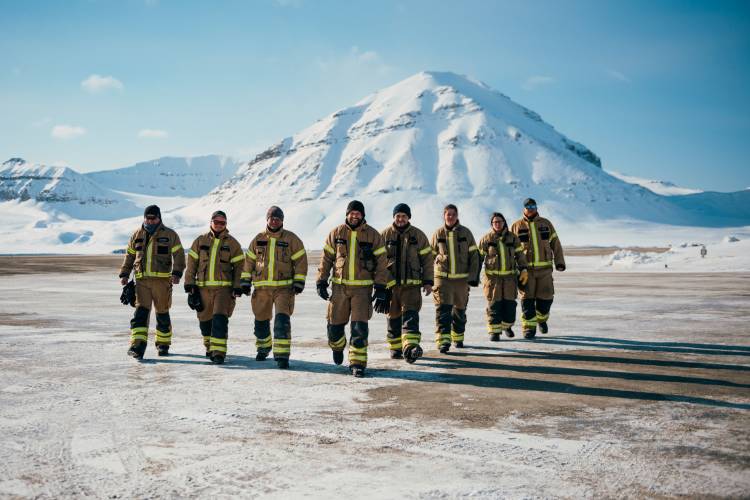The Canadian town of Churchill, Manitoba, is working to establish the world’s first polar bear safe community. It is the next step in a drive to minimize encounters between people and polar bears so both can thrive. More encounters are likely as retreating sea ice is forcing nutritionally stressed bears to spend more time on shore.
Churchill knows a thing or two about polar bears. It sits on the western shore of Hudson Bay and is visited by hundreds of bears each year. They leave the melting ice east of the town in spring and make their way overland, joining the new ice as the bay re-freezes in late fall. Churchill is en route, which has made it a nature tourism hotspot and earned it the nickname Polar Bear Capital of the World.
The bears are a major economic asset for the town and locals want them around—they just don’t want to bump into them on a downtown street corner.
Better and smarter
Historically, the community has focused on removing food sources that attract bears, educating people about bear safety, and keeping people and bears apart. It has also pioneered such initiatives as the year-round Polar Bear Alert Program, a 24-hour hotline with professional responders to whom people can report bear sightings that could pose a risk. In addition, it has introduced a polar bear holding facility, where bears who come into town are temporarily (but humanely) held before being relocated.
Churchill’s mayor, Mike Spence, said the town is now building on those successful initiatives to “up their game.”
“We’ve definitely played a role in coexistence, but we can do a lot more,” he said. “Our polar bears are such a valuable resource, and we need our nature tourism industry to flourish.
“We all have a responsibility to our community and the bears, so we have to do things better and smarter. We have to make the most of economic opportunities for local people while improving safety.”
To this end, the town of Churchill, with support from Polar Bears International, has used their strong local partnerships to set up a working group with representatives from across the community. The working group engaged the whole town, from local authorities to tourism operators and the chamber of commerce. It also included Indigenous and community representation, along with a delegate from Manitoba Province. A federal government representative joined the second meeting.
What is a polar bear safe community?
As with any coexistence between humans and wild animals, safety can never be 100% guaranteed. A polar bear safe community, however, can make its area significantly safer for both people and bears. On the ground in Churchill, this means fewer bears in town and fewer bears that have to be locked up or relocated.
People will still be advised to exercise caution, especially when bears are gathering along the shore and waiting for the ice to form.
“We are trying to lead by example,” said Mayor Spence. “We want to show the world that communities like Churchill can come together and make a difference. We want other communities to see us as an example of somewhere that has made some big changes which have improved how we safely coexist with polar bears. We hope this will inspire more and more communities to follow our lead, so they become polar bear safe too.”
A united front
The biggest cause of conflict between polar bears and people is food. As a first step, the working group is considering what can be done to enhance Churchill’s efforts to reduce food sources in town. It’s important not just to secure waste so bears can’t get to it, but also to reduce food smells, which attract them in the first place.
This is one action that the town is getting on with. Some other actions, however, must be approved by the Manitoba Province or the federal government. A major reason for setting up the working group was to show these governments that the polar bear safe initiative is being promoted not just by Churchill and its tourism operators, but by a broader, united group representing a wide range of sectors of society and with considerable combined expertise.
Relocation re-think
One of those higher-level government decisions is where to relocate bears who come into town. The working group is floating the idea of relocating them within Wapusk Park, instead of farther up the Hudson Bay coast, which has previously been done.
Wapusk covers 11,475 square kilometers (4,420 square miles) and already protects one of the largest polar bear maternity denning areas in the world. If this can be done in line with improved garbage handling, the working group believes it will reduce the incentive for the bears to come into the townsite. Instead, they’ll remain safely within the park, providing more viewing opportunities for tourists but staying away from communities. It’s a potential win for everybody—and every bear—if the working group can convince the governments of its merits.
Other working group priorities include stationing a provincial wildlife biologist in town, improving bear awareness materials and strategies for visitors and locals, and supporting efforts to test and adopt improved bear tracking systems.
Next steps
The working group has been delayed slightly by COVID-19, but it is making progress. Delegates held a second meeting in June. At that gathering, wildlife biologists from Manitoba Province and the Canadian Government presented updates. Several follow-up meetings are scheduled for later in the year.
These may sound like small steps, but they are essential in the design and long-term effectiveness of the world’s first polar bear safe community.
Matt Brace is an award-winning writer and editor. He is a former reporter and foreign correspondent for The Independent and The Observer national newspapers in the UK.
















